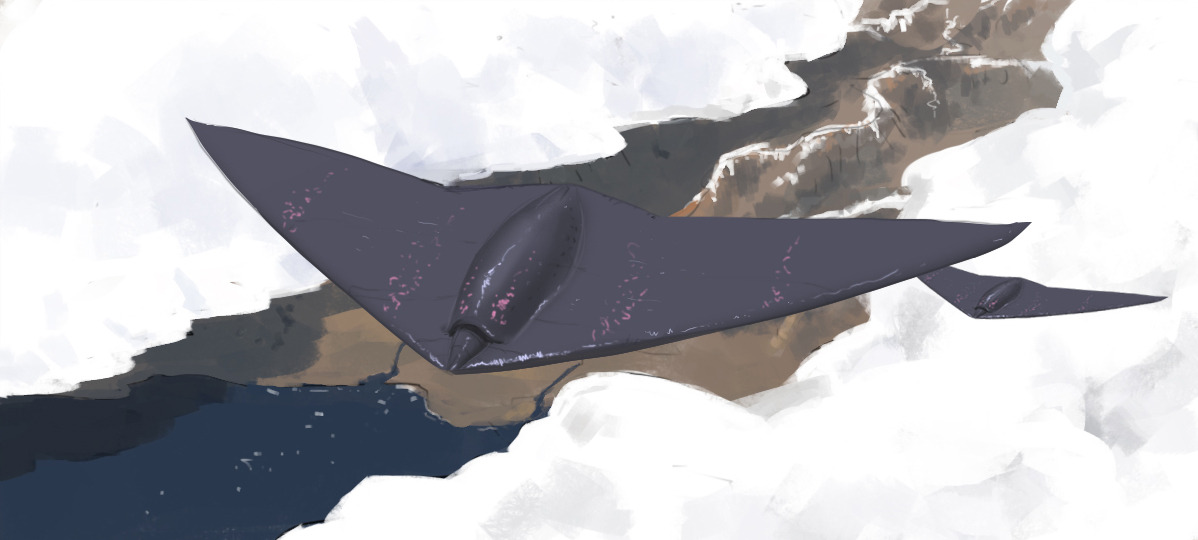
Biojet
The so called “biojets,” one of a variety siliconavium, or “silicon birds” found on Copernicus-51. They are the first, and so far only, silicon-based life forms discovered in our galaxy, an especially odd fact considering that all other known Copernican lifeforms are carbon-based. Their entire wingspan acts as a solar panel- its layers of subcutaneous semiconductor cells convert sunlight directly to energy. Their solar diet is lightly supplemented by nutrients from more traditional sources.
Their evolutionary origin is one of the most contentiously-disputed open questions in modern xenobiology. Theories range from the conservative to the spectacular, with the hypothesis that they are descended from the biosynthetic drone-stock of a vanished civilization gaining surprising traction in recent years.







